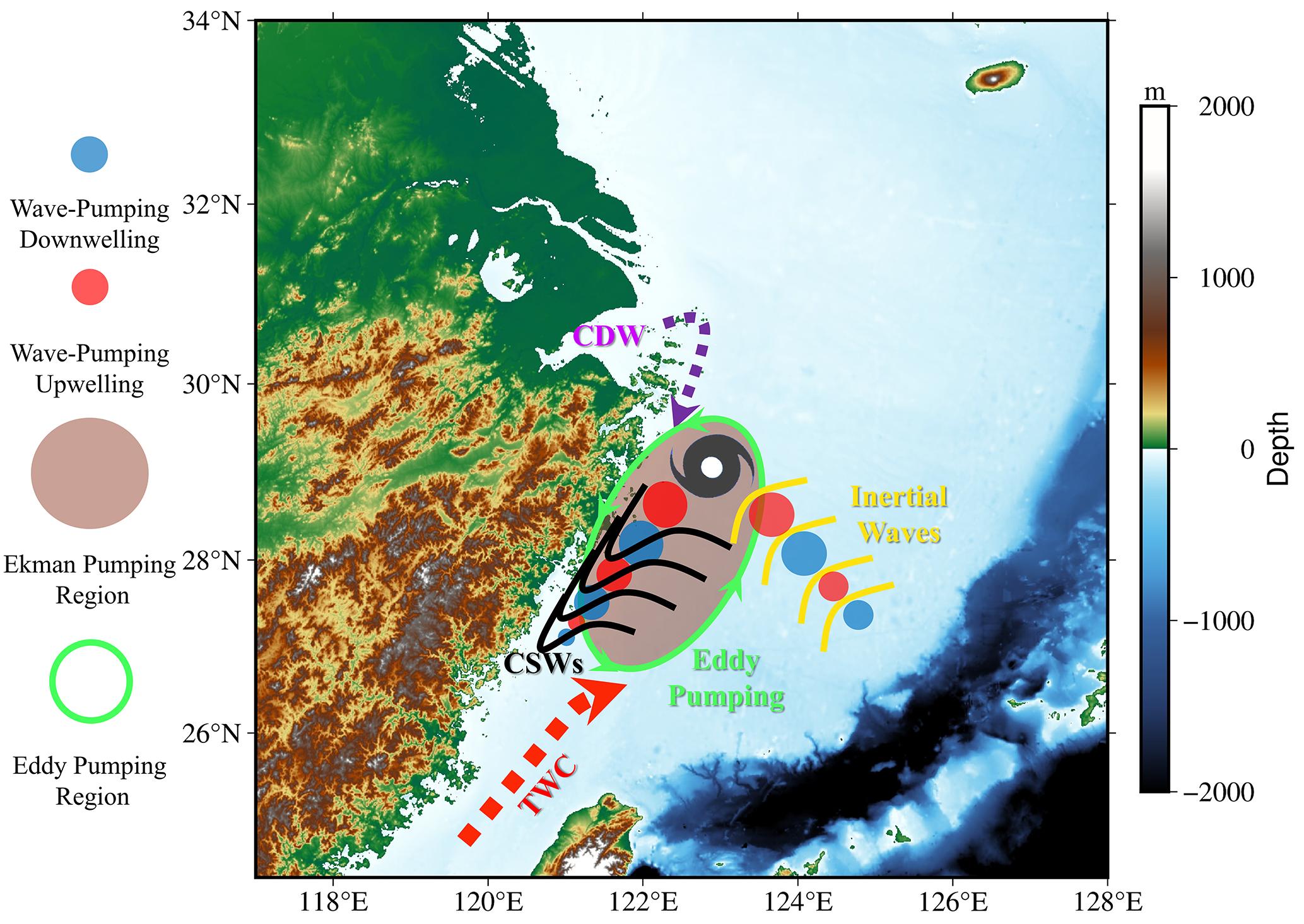The harmful algal blooms are increasingly reported off the coasts of Zhejiang Province, China, where has a complicated circulation pattern related to the Changjiang River Diluted Water (CDW), the Taiwan Warm Current (TWC), the Kuroshio Current (KC), and exchanges between the East China Sea (ECS) and the KC.
In addition, typhoons (hurricanes or tropical cyclones) developing in the Western North Pacific frequently reach this area in the warm season and algal bloom in the near-shore regions increase after typhoons. Though the phosphate input from the intrusion of the Kuroshio Subsurface Water (KSSW) contributes a lot to the growth of the plankton, the mechanism of typhoon-induced algal blooms remains unclear.
Recently, the research team led by Prof. YIN Baoshu from the Institute of Oceanology of the Chinese Academy of Sciences (IOCAS) figured out three types of typhoon-induced upwellings, which is responsible for KSSW outcropping and highly related to the algal blooms.
The study was published in Journal of Geophysical Research: Oceans on May 9.
Researchers used a fine-resolution coupled physical-biological model based on Regional Ocean Model System (ROMS) to reproduce oceanic responses during Super-Typhoon Chan-hom. The modeled surface Chl-a results were highly consistent with satellite data, indicating a significant algal bloom phenomenon along the coast of Zhejiang Province.
Through three-dimensional dynamic diagnostics, researchers revealed three types of typhoon-induced upwellings: the classical linear wind-Ekman pumping, nonlinear wave pumping (low-frequency coastal shelf waves along the coasts and high-frequency near-inertial waves along the typhoon track), and eddy-induced pumping. These upwellings make the phosphate-rich bottom KSSW outcrop and then available to the subsequent phytoplankton blooms.
"Typhoon Chan-hom provided a good example to figure out multiple upwelling mechanisms. These upwellings along with vertical mixing supply abundant nutrients from the bottom to the upper ocean, facilitating the occurrence of algal blooms after typhoons," said LI Yuxuan, first author of the study.
"The nonlinear processes should be considered in ecological response to typhoons and this work proved the close connection between physical processes and marine environment changes again. Furthermore, this study developed a diagnostic method for upwelling and revealed the general dynamic mechanisms of typhoon-induced upwellings on the continental shelf. The methods can apply to other shelf sea regions worldwide," said Dr. YANG Dezhou, the corresponding author.
The research was supported by the National Natural Science Foundation of China, the Strategic Priority Research Program of the Chinese Academy of Sciences, the Strategic Priority Research Program of the Chinese Academy of Sciences, Key Deployment Project of Centre for Ocean Mega-Research of Science, National Key Research Development Program of China, the NSFC-Shandong Joint Fund, etc.

Schematica map for typhoon influence on the ECS continental shelf by three types of typhoon-induced upwelling
1. The wind Ekman pumping mainly affected regions around the center of typhoons, 2. Nonlinear wave pumping contains the Coastal Shelf Waves (CSWs) propagating along the coast and inertial-gravity waves occurring along the track, 3. The eddy-induced pumping effect after typhoons, which was located off the coasts of Zhejiang Province in case Chan-hom. The sizes of red and blue circles represent different intensities of vertical motions.
Li, Y., Yang, D., Xu, L., Gao, G., He, Z., Cui, X., et al. (2022). Three types of typhoon-induced upwellings enhance coastal algal blooms: A case study. Journal of Geophysical Research: Oceans, 127, e2022JC018448.
LI Yuxuan, YANG Dezhou
Institute of Oceanology
E-mail: yuxuanli@qdio.ac.cn; yangdezhou@qdio.ac.cn
(Editor: ZHANG Yiyi)
|
|

Address: 7 Nanhai Road, Qingdao, Shandong 266071, China
Tel: 86-532-82898902 Fax: 86-532-82898612 E-mail: iocas@qdio.ac.cn


